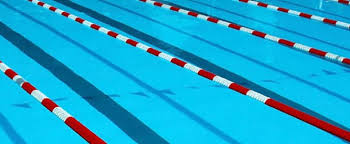I regularly swim in a local pool and like to observe people’s behavior under various conditions of crowding. This Olympic size pool has six lanes of standard width. When there are three or more swimmers in a lane the rule is to swim in a circular way, bearing right in each direction. When there are two swimmers in a lane the rule is different: the swimmers split the late between them. Half a lane is perfectly sufficient for a person, and all is well. It gets really interesting when one of the two swimmers leaves the shared lane. I noticed that under these circumstances most solitary swimmers shift toward the center of the lane, leaving no room for anyone else. Occasionally a sufficiency devotee remains in their half lane, but most people spread out.
I recall an article I read some years ago by Bill Rees, a highly respected ecologist at the University of British Columbia, about our evolutionary tendency to consume all the resources available to us. In it, Rees argued that H. sapiens is unsustainable by nature – its once adaptive, subconscious, genetic predisposition is to expand. Rees calls this trait, which we share with other larges species, especially mammals, “K-selected expansionist tendencies”. This evolutionary tendency can be kept under check through social and cultural norms, religious teachings, public policies, institutional forces and others; they can also be, and are, magnified and exploited by the forces of competition and economic growth imperative.
The behavior of my fellow swimmers confirms Rees’ hypothesis. In this pool, of course, the expansionist tendencies are highly restricted: the lanes are never allowed to get wider, a new swimmer forces the space hawk to move to the side, the size of the pool is unlikely to change. But what hope is there for the sufficiency movement in other life domains?

